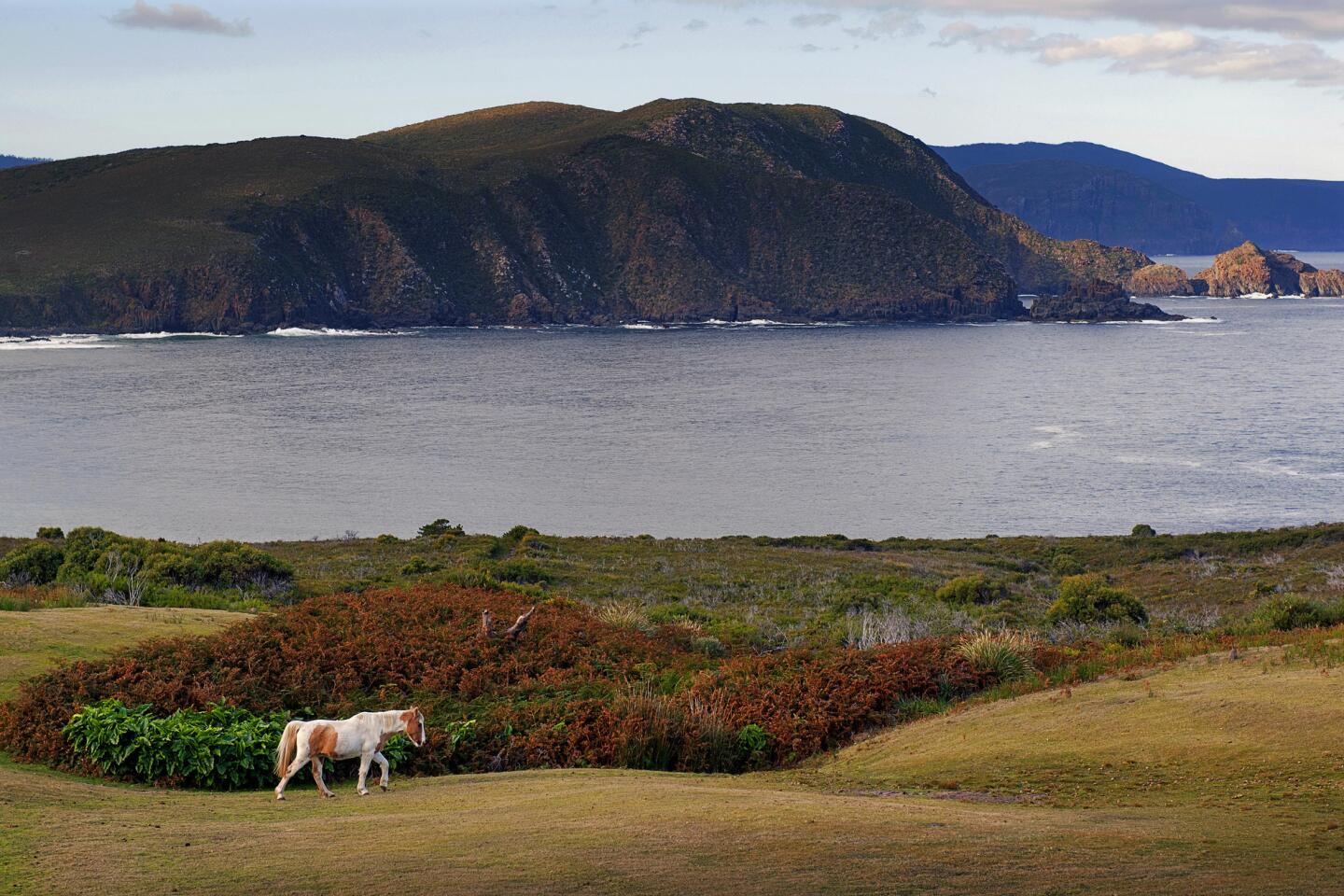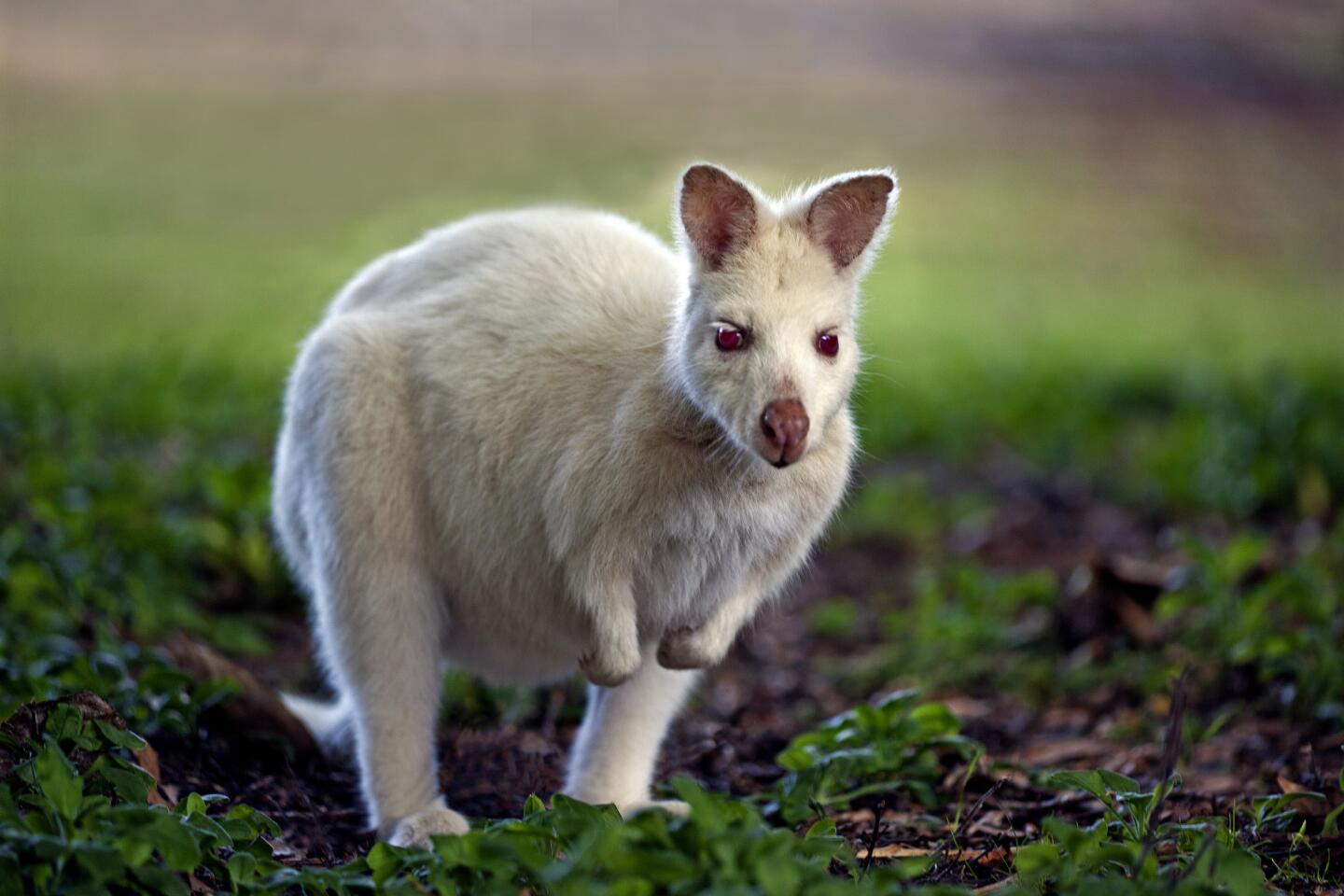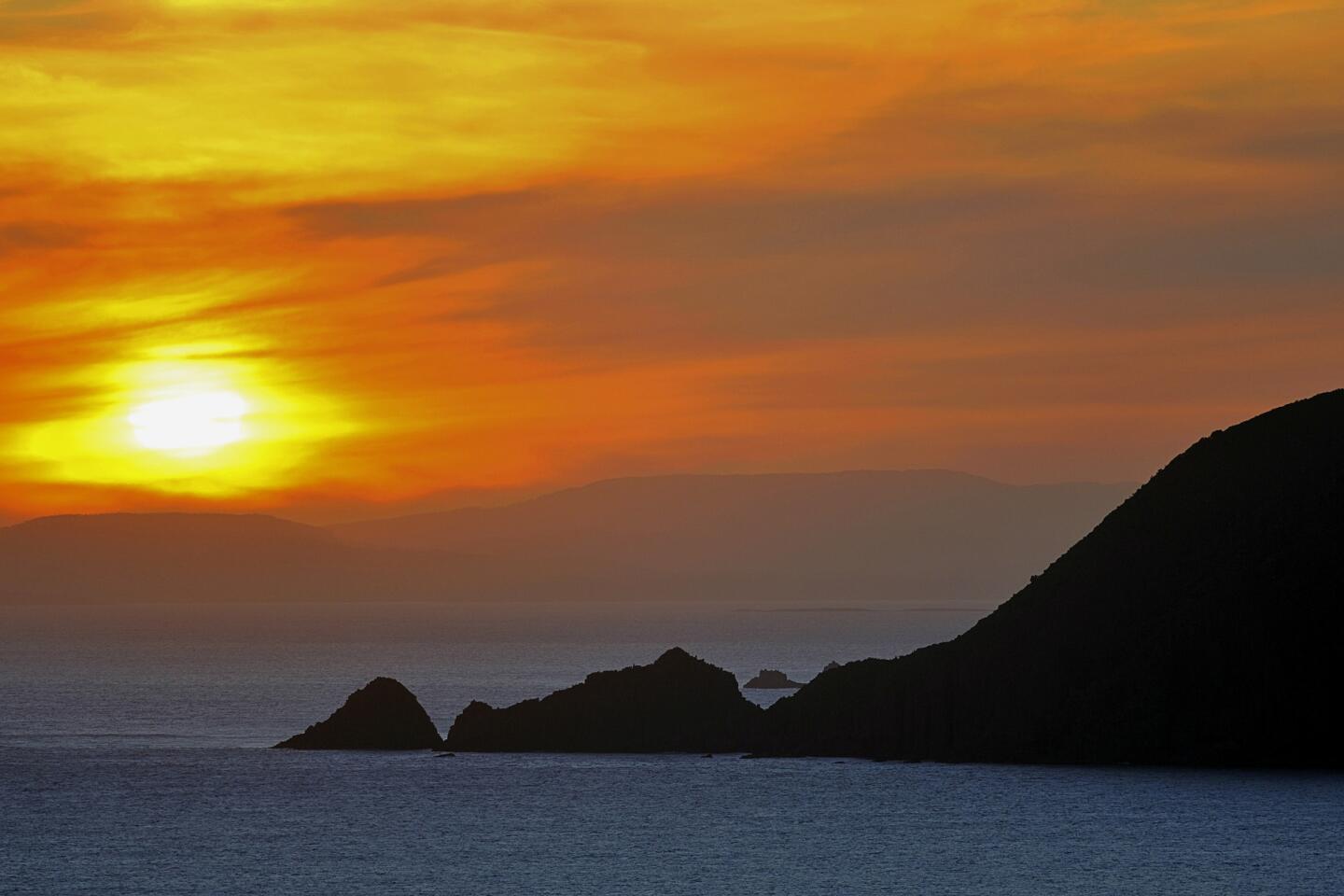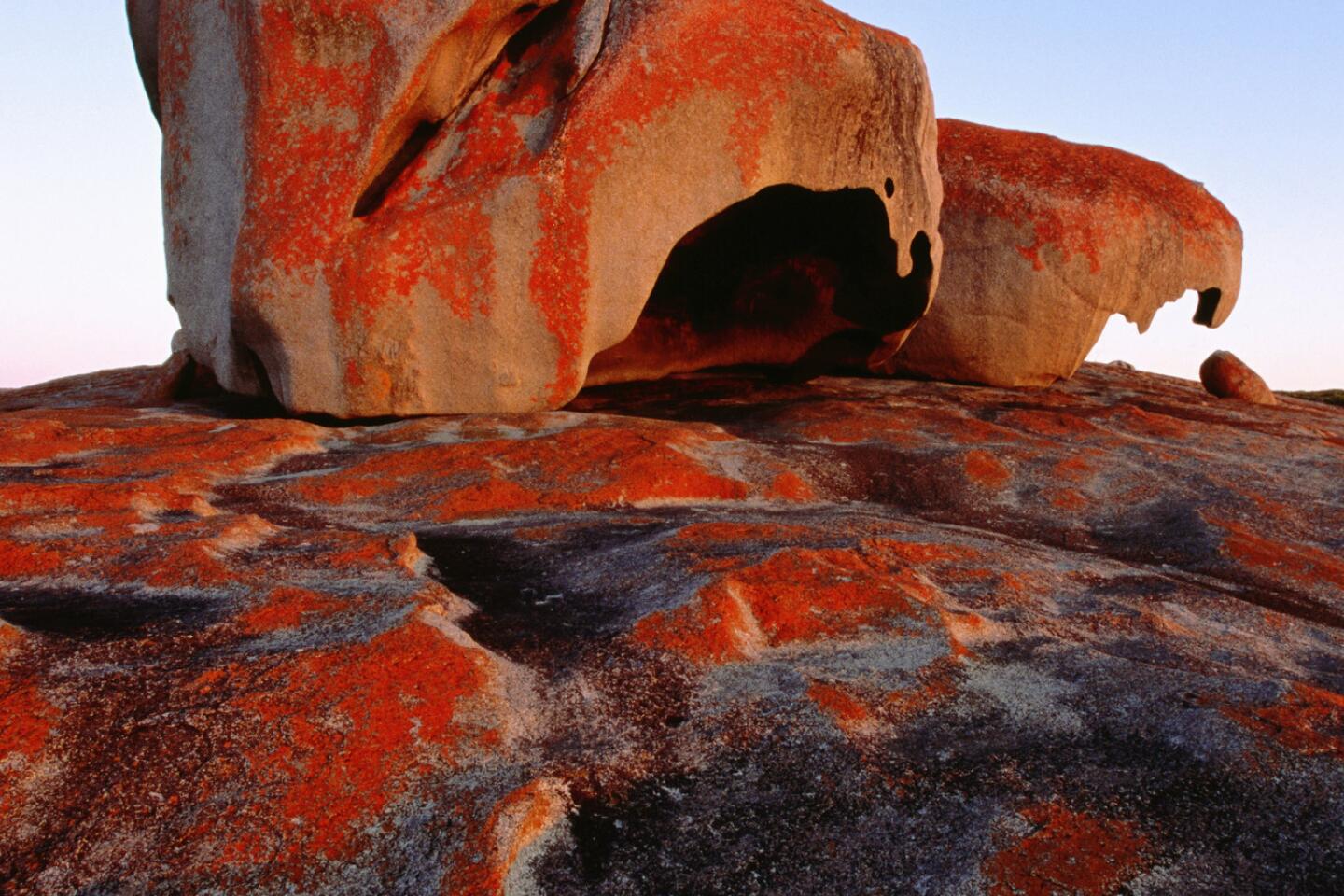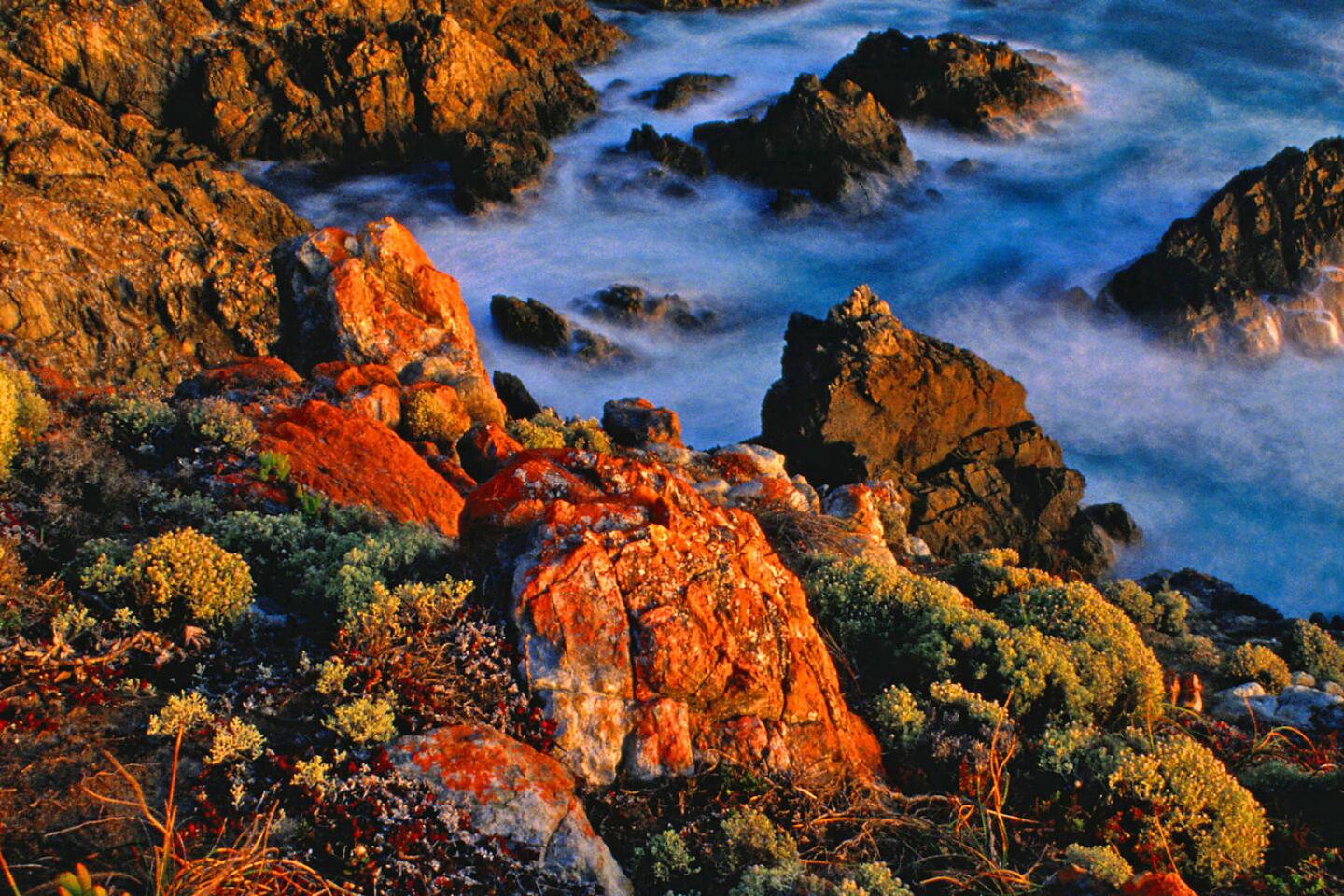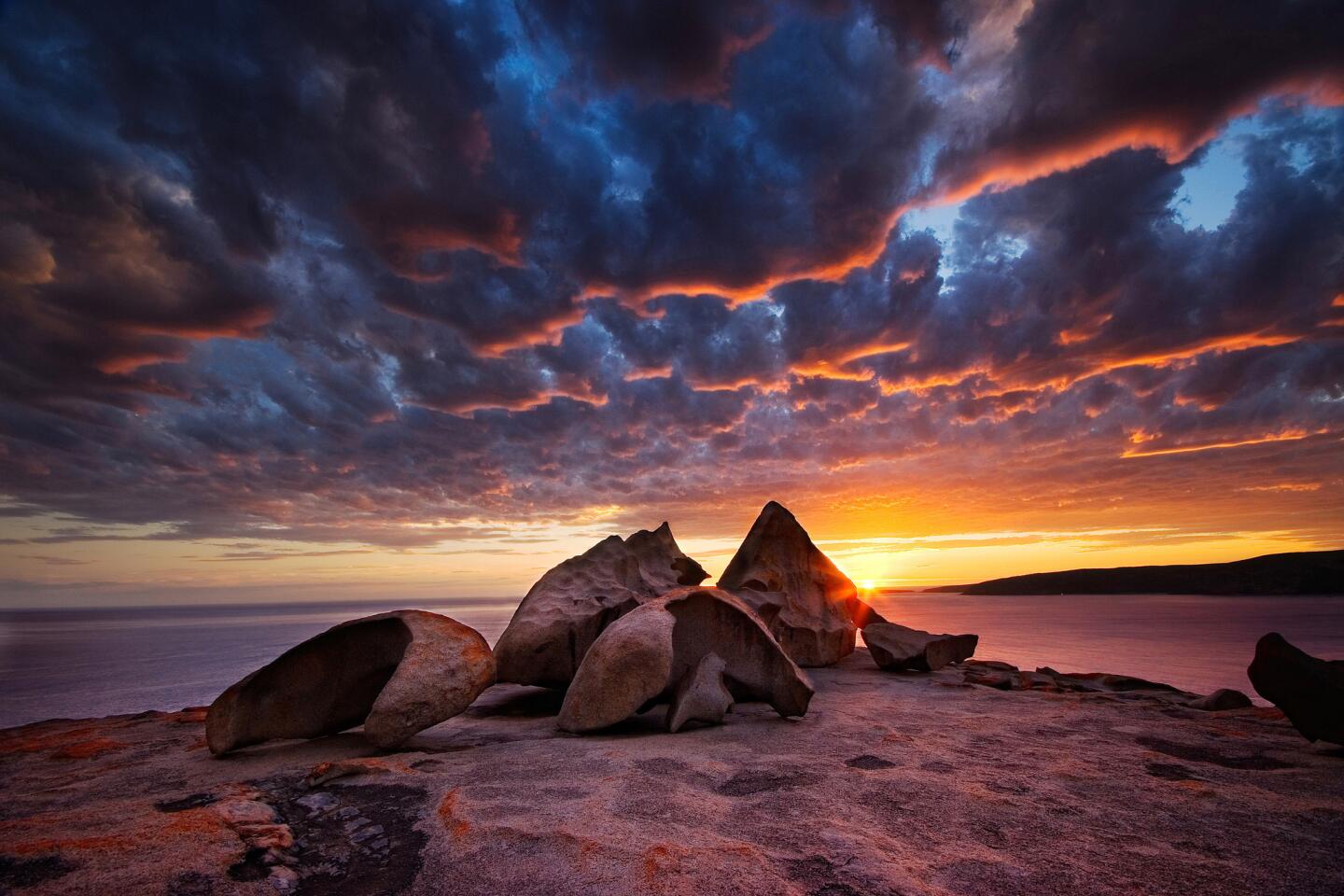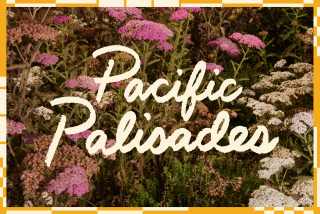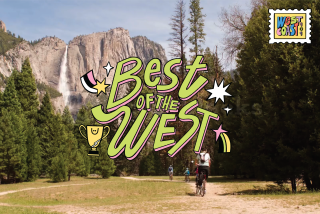Australia’s Tasmania, Kangaroo Island offer pure, strange delights
- Share via
Australia is about three-quarters the size of the United States, but with 24 million people versus our 318 million. What this means is that a huge part of the continent is unfamiliar to most people, even some Australians. And one of the lesser-known parts, and yet my favorite, is the islands off its southern coast. Tasmania, and its 334 outlying islands, is one of the finest. And, farther west, Kangaroo Island, off Adelaide, is another. Last year, in search of fresh air, healthful food and some old-fashioned nature walks, I ventured far south to a few of these islands.
Bruny Island, Tasmania
Despite its convict history, the Australian state of Tasmania is no longer associated only with austerity and privation. Nowadays it’s a sybarite’s nirvana surrounded by some of the most untouched nature on the planet. “Mainland Tassie,” as the Tasmanians who live on the outer islands call it, covers 35,000 square miles, and 45% of that is preserved in bio-reserves, national parks or World Heritage sites. On the other 55%, there are just 515,000 people.
Besides the ruins of an 18th and 19th century British penal colony, today it has luxurious accommodations, imposing mountains, empty white beaches, artisanal food, award-winning wines, hip restaurants and the Museum of Old and New Art, or MONA, a cutting-edge modern art museum.
Tasmania sits 150 miles off mainland Australia, and it’s easier to fly than take a boat. It’s an 11-hour ferry ride, but the water, which flows directly from the Antarctic, can be rough. With airports in Hobart, its capital city, and Launceston, it’s within a two-hour flight from Sydney or Melbourne.
Off Mainland Tassie, there are several populated islands that make for an even more authentically homegrown Australian experience. I decided to stay on Bruny Island, said to have the freshest food in Australia.
I’d booked my trip through Springboard Vacations, an L.A.-based company that specializes in South Pacific travel. Ruth Grau, the company’s Australian co-owner, had told me that Bruny was the place to go for out-of-bounds Tasmania; inventive, organic, freshly grown or caught food; and some crazy animal species.
Bruny, a 15-minute ferry ride from Hobart, is a great weekend getaway. Springboard had arranged a guide for me, so Scotty Wallace met me at the ferry.
“Whaddyamean, ‘fresh’? Everything here is fresh. How could it not be fresh? Take a gander around, luv.” This was Wallace’s response to my query about whether everything — the air, the food, the water, the land and the people — on Bruny Island is as fresh as its reputation.
I stayed at Adventure Bay Retreat (adventurebayretreat.com.au), an elegant, modern cottage in a field populated by white wallabies and the occasional wombat — a strange, bear-like marsupial. In layman terms, wallabies are similar to small kangaroos, and white ones are a few genes short of albino.
When it comes to camouflage, that’s a bummer of a mutation, but on Bruny, where there are no predators, wallabies abound. At sunset, I sat on my deck drinking Bruny Island Vineyard Pinot Noir and watched them gather to dine on my lawn, lifting their heads politely when I spoke to them.
Each morning Wallace picked me up and took me to a national park, a remote beach or on a boat trip along the rugged coast to see seals and the endangered little penguin, the smallest species of penguin.
The well-padded Wallace was keen about his food, so these outings happened between meals and frequent stops for snacks. We hit the berry farm for raspberry pancakes, then the cheese maker for Otto cheese wrapped in local prosciutto, then to Get Shucked, the oyster farm, and finally to the Bruny Island Smokehouse for charcuterie and a taste of excellent Tasmanian whiskey. The Smokehouse special that day was — the horror — wallaby sausage. “Not the white ones, luv,” Wallace assured me. “But the regular ones make a corker bite, don’tchyathink?”
Freycinet National Park, Tasmania
Back on Tasmania proper, I drove northeast along narrow country roads to Freycinet National Park and the world-class Saffire Freycinet lodge (www.saffire-freycinet.com.au). An architectural masterpiece that appears to float on the landscape, the lodge sits inside the 65-square-mile Freycinet National Park with nothing in sight but grasses, rugged pink granite mountains and the Tasman Sea. The park is known for its pristine beauty and is particularly famous for Wineglass Bay, the “beauty” shot used in most brochures on Tasmania.
The pièce de résistance of all my Tasmanian meals came in the form of a bush picnic within the park. With four other Saffire guests, we took the lodge’s motor yacht past 400-million-year-old rocks and were dropped off at a beach. Following the guide, we climbed a ridge and hiked through bush to Wineglass Bay. But this wasn’t good enough. “Too many people,” our guide complained of the six other humans populating the beach.
She marched us to Hazards Beach, totally uninhabited and even lovelier. She walked along the silica sand and disappeared into the bush, yelling, “We’ve godda bush-bash.”
We “bush-bashed” to a small point above another private beach. Instead of the sandwich and beer I was expecting, there were two men in chef uniforms, an outdoor kitchen and an elegant table set with a white tablecloth, silverware and wine glasses.
I was handed a frosty glass of Champagne and served a five-course meal that included homemade duck liver parfait, just-caught tuna sashimi, Tasmanian Balmain bugs (similar to rock lobster), local lamb, a cheese platter and a different Tasmanian wine with each course. It seemed ironic that settlers and convicts lived on potatoes and cabbage. Today Tasmania might just have the world’s best food.
Kangaroo Island, South Australia
From Tasmania, I flew to Melbourne and then to Adelaide, where I took a 30-minute flight to Kangaroo Island. There’s a 45-minute ferry ride, but that required a two-hour drive to the terminal, so the flight was the faster option.
Once again, Springboard Vacations had arranged for a guide, and Craig Wickham of Exceptional Kangaroo Island Tours (exceptionalkangarooisland.com) picked me up. Driving down the snaking, empty road from the airport, he told me that “landmass-wise, KI is just a smidge smaller than your state of Delaware, but only 4,500 of us crazies live out here.” (Delaware has nearly 1 million residents.) “There’s lots of fresh air all to yourself.”
Kangaroo Island’s vibe is different from Tasmania’s, with a more refined manner of speaking and an Anglophile civility, a place where there’s always time to have a cup of tea or watch koalas do absolutely nothing up a eucalyptus tree. (I’d like to put in a word for the wombat here. Far cuter and more active than koalas.)
I spent three days touring KI with Wickham while staying at the luxurious and stunningly located Southern Ocean Lodge (southernoceanlodge.com.au), an airy, modern building tracing the top of a cliff hammered by ocean spray. The lodge website actually makes the point that its air is highly oxygenated and therefore invigorating because of the pounding water below. All suites are glass-fronted and positioned so that the only thing that can see inside is a nosy kangaroo.
“No convicts here,” Wickham said emphatically when I asked about his ancestors. “The first-comers were aborigines, then sealers and whalers, then returning WWII soldiers. And now it’s specialty farmers and wine makers.”
The island is lined with hidden white beaches, prehistoric cliffs and azure water. And it teems with wildlife. “Our creatures aren’t threatened like over there,” he said, jerking his thumb in the direction of the mainland. “We’ve got ‘roos, wallabies, koalas, platypus, monitor lizards and spiny anteaters and a whole host of birdlife.” “Yes,” I said in response, “Australia wins for weirdest creatures on the planet.”
“And proud of it. At least there are not too many that can kill you out here, unlike over there,” he said, again gesturing at the mainland, where some of the world’s deadliest snakes and spiders reside.
We headed for Flinders Chase National Park at the west end of the island, a wild and wind-torn stretch of land that is now home to some of Australia’s most endangered animals, brought here from the mainland to be left in peace. Koalas, platypuses, goannas and spiny anteaters are seen here, but more common are the fur seals lining the rugged coastline, slipping ashore between red primordial rock formations.
At the park’s Remarkable Rocks, lichen-covered boulders perched haphazardly above the roiling ocean, Wickham hauled out a thermos of tea. “Let’s have a cuppa,” he said.
Two hours later, we drove past a sign that read, “Djabringabeeralong.” Accustomed to unpronounceable aboriginal names, it took me a second to decipher this one while Wickham veered off the road and across a field.
I’d come to understand that southern Aussies love stopping in the middle of gorgeous nowhere, and I expected it was time for another “cuppa” or glass of wine — it’s always one or the other. But on the edge of this field stood a canvas canopy and a bush kitchen. Wickham strapped on an apron and went to work grilling fresh fish for a lunch that included a salad of homegrown greens, olive rolls and a sheep’s cheese that “my mate makes,” washed down with a crisp Semillon that “another mate makes” at the Islander Estate winery.
Later, I met Janine Mackintosh, a KI artist who makes extraordinary art from leaves, bark and pods that she collects while roaming the island forests. Her light-washed studio overflows with found objects and the artwork that sells at major art galleries and adorns the walls of the Southern Ocean Lodge.
“There’s natural beauty everywhere you look on this island,” she told me. “From the tallest cliffs to the tiniest seed. I suppose being so far away helps, but the rest of the world hasn’t reached here yet.”
As I toured Mackintosh’s private domain, I realized that I could not say which of Australia’s southern islands I preferred. Everything here is beautiful, clean and real — the people, the food, the wine, the scenery, the animals, even the art.
“This is an edge of the world that has retained its purity,” Mackintosh said.
“And may it remain that way,” I replied, raising another “cuppa” to my lips.
If you go
THE BEST WAY
From LAX, Qantas and Virgin Australia offer connecting service (change of planes) to Hobart, Tasmania. Restricted round-trip fares from $671 to $1,666. Air New Zealand, Qantas and Virgin Australia offer connecting service to Adelaide, Australia. Restricted round-trip fares from $980 to $1,657.
Travel for this trip was booked through Springboard Vacations in Los Angeles; (866) 447-7746, springboardvacations.com. The owners are Australian. They cater to most budgets, so luxury lodges are not the only alternative.
More to Read
Sign up for The Wild
We’ll help you find the best places to hike, bike and run, as well as the perfect silent spots for meditation and yoga.
You may occasionally receive promotional content from the Los Angeles Times.
